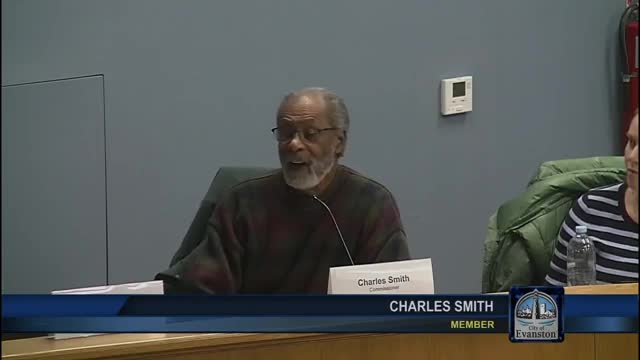Evanston leaders debate housing strategy amid concerns over neighborhood preservation and gentrification
December 21, 2024 | Evanston, Cook County, Illinois
This article was created by AI summarizing key points discussed. AI makes mistakes, so for full details and context, please refer to the video of the full meeting. Please report any errors so we can fix them. Report an error »

The Preservation Commission Meeting held on December 12, 2024, in Evanston, Illinois, focused on critical discussions surrounding neighborhood preservation, housing development, and community demographics. The meeting aimed to address the balance between maintaining the character of historic neighborhoods and the need for increased housing production.
The session began with a reflection on the historical significance of local families, such as the Robinson and Summers families, and the importance of recognizing their contributions to the community. A member expressed concern about the potential for harm versus good in development decisions, emphasizing the need for a comprehensive plan that considers both preservation and neighborhood stabilization.
Key discussions revolved around the projected population growth in Evanston, with estimates suggesting an increase from 77,800 to 84,175 by 2045. This projection raised questions about the necessity of creating approximately 140 new housing units annually. Participants debated whether zoning changes, such as allowing multifamily units, would effectively address housing needs without compromising neighborhood integrity.
Concerns were raised about the impact of development pressures on existing homeowners, particularly in areas where land is cheaper and more attractive to developers. The potential for displacement of long-term residents was highlighted, with calls for guardrails to prevent destabilization of vulnerable neighborhoods.
The conversation also touched on the effectiveness of Accessory Dwelling Units (ADUs) as a tool for increasing housing diversity. Some members argued that without restrictions on short-term rentals, ADUs might not contribute significantly to affordable housing solutions.
As the meeting progressed, participants expressed skepticism about the proposed zoning changes allowing four units per parcel across the city. Many felt that such a broad approach might not be necessary to achieve housing goals and could undermine the character of single-family neighborhoods.
In conclusion, the commission reached a tentative consensus on the need for a more nuanced approach to zoning and development. Members agreed that while increasing housing is essential, it should not come at the expense of neighborhood stability and historical preservation. The meeting underscored the complexity of balancing growth with the preservation of Evanston's unique community character, setting the stage for further discussions and recommendations to the city council.
The session began with a reflection on the historical significance of local families, such as the Robinson and Summers families, and the importance of recognizing their contributions to the community. A member expressed concern about the potential for harm versus good in development decisions, emphasizing the need for a comprehensive plan that considers both preservation and neighborhood stabilization.
Key discussions revolved around the projected population growth in Evanston, with estimates suggesting an increase from 77,800 to 84,175 by 2045. This projection raised questions about the necessity of creating approximately 140 new housing units annually. Participants debated whether zoning changes, such as allowing multifamily units, would effectively address housing needs without compromising neighborhood integrity.
Concerns were raised about the impact of development pressures on existing homeowners, particularly in areas where land is cheaper and more attractive to developers. The potential for displacement of long-term residents was highlighted, with calls for guardrails to prevent destabilization of vulnerable neighborhoods.
The conversation also touched on the effectiveness of Accessory Dwelling Units (ADUs) as a tool for increasing housing diversity. Some members argued that without restrictions on short-term rentals, ADUs might not contribute significantly to affordable housing solutions.
As the meeting progressed, participants expressed skepticism about the proposed zoning changes allowing four units per parcel across the city. Many felt that such a broad approach might not be necessary to achieve housing goals and could undermine the character of single-family neighborhoods.
In conclusion, the commission reached a tentative consensus on the need for a more nuanced approach to zoning and development. Members agreed that while increasing housing is essential, it should not come at the expense of neighborhood stability and historical preservation. The meeting underscored the complexity of balancing growth with the preservation of Evanston's unique community character, setting the stage for further discussions and recommendations to the city council.
View full meeting
This article is based on a recent meeting—watch the full video and explore the complete transcript for deeper insights into the discussion.
View full meeting
